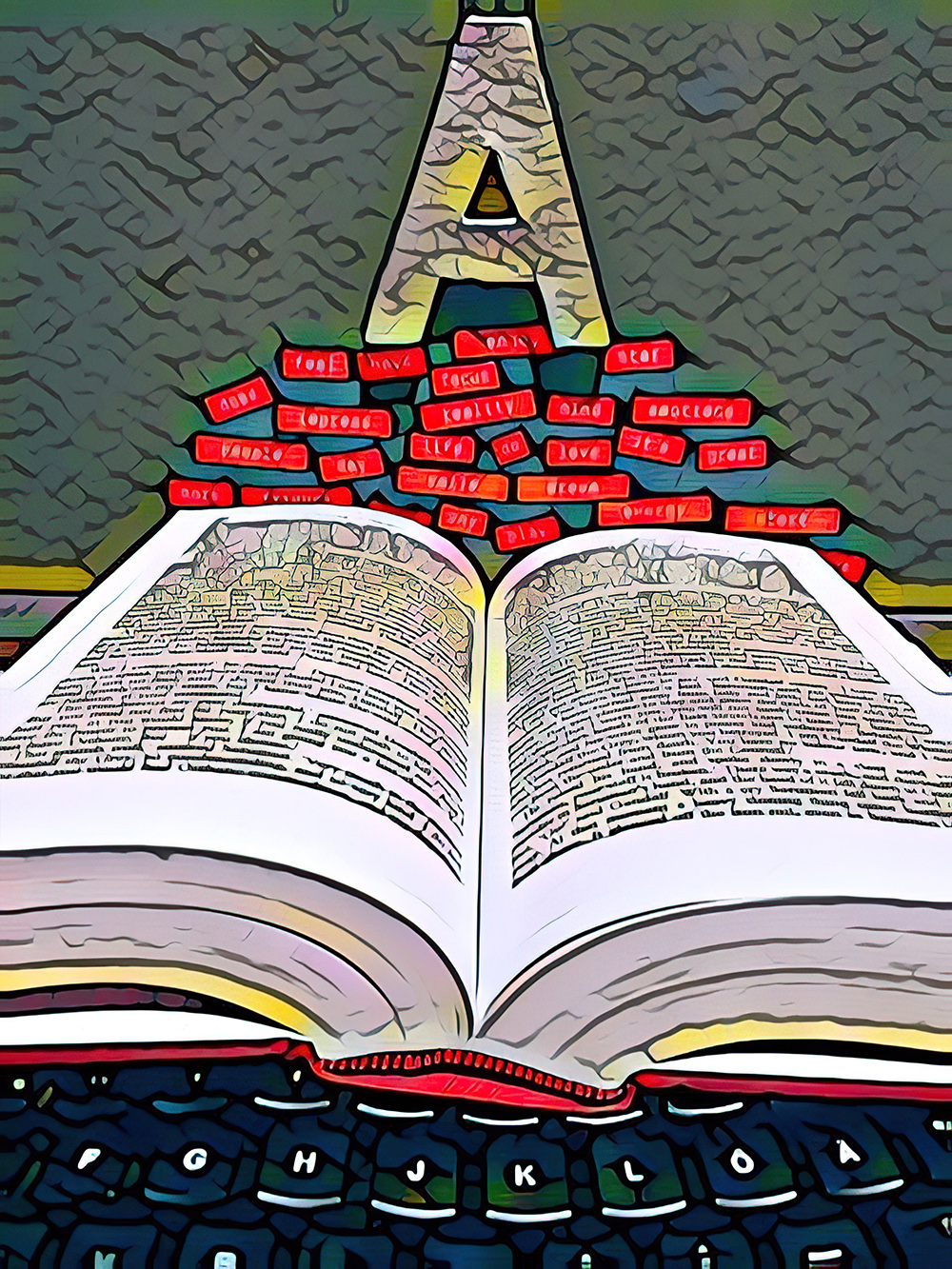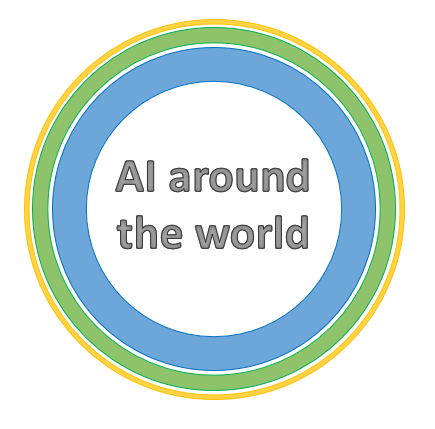
ΑΙhub.org
Natural Language Processing for low-resource languages
 Teresa Berndtsson / Better Images of AI / Letter Word Text Taxonomy / Licenced by CC-BY 4.0.
Teresa Berndtsson / Better Images of AI / Letter Word Text Taxonomy / Licenced by CC-BY 4.0.
The majority of natural language processing (NLP) datasets and research at present focus on a small number of high-resource languages, with studies on English dominating the field. Clearly, such an imbalance is undesirable, putting those who do not use English at a disadvantage.
In this article, we highlight some of the work and initiatives being carried out on low-resource languages.
Lanfrica
Africa is one of the most linguistically diverse regions in the world. Despite this, African languages are barely represented in technology and research. Lanfrica aims to mitigate the difficulty encountered in the discovery of African language resources by creating a centralised hub. The team at Lanfrica have built a language-focused search engine that makes it fast and easy to find information on the internet about resources relating to African languages. Now with more than 1000 resources, their aim is to catalogue and connect all African language resources, one record at a time.
As well as this platform, Lanfrica also hosts regular online talks where you can hear from researchers in the field. This talk series provides a platform for anyone to share/showcase their efforts (research, projects, software, applications, datasets, models, initiatives, etc.) in NLP.
Masakane
Masakhane is a grassroots organisation whose mission is to strengthen and spur NLP research in African languages. The organisation is currently engaged in a number of projects, including:
- Delivering text and speech datasets for low resourced East African languages from Uganda, Tanzania and Kenya
- Building a multilingual scientific parallel corpora of African research, by translating African papers released on AfricArxiv into multiple African languages.
- Creation of a large named entity recognition (NER) corpus for over 20 African languages. This annotation will enable the speakers of these languages to search and access more information in their native languages.
- Sentiment analysis and hate speech. The project aimed at developing sentiment corpus enough for machine learning and other natural language processing tasks. The target is to generate at least 6,000 lexicons for each language.
Urdu
In this paper, Maaz Amjad, Sabur Butt, Hamza Imam Amjad, Alisa Zhila, Grigori Sidorov and Alexander Gelbukh outline their approach when taking part in the shared task UrduFake@FIRE2021, which centred on fake news detection in Urdu. This shared task aimed to attract and encourage researchers working in different NLP domains to address the automatic fake news detection task and help to mitigate the proliferation of fake content on the web.
The team have also looked into tweets in Urdu, in their paper Threatening Language Detection and Target Identification in Urdu Tweets.
Indian regional languages
B. S. Harish and R. Kasturi Rangan provide a comprehensive survey on Indian regional language processing, looking at tasks such as machine translation, named entity recognition, sentiment analysis and parts-of-speech tagging.
Bengali
Md. Rajib Hossain and Mohammed Moshiul Hoque study Bengali word embedding in their paper Towards Bengali Word Embedding: Corpus Creation, Intrinsic and Extrinsic Evaluations. They presents three embedding techniques with different hyperparameters implemented on a Bengali corpus with consists of 180 million words.
Indigenous languages of the Americas
Introducing QuBERT: A Large Monolingual Corpus and BERT Model for Southern Quechua, by Rodolfo Zevallos et al., introduces a large combined corpus for deep learning of Quechua. The authors also provide a public, pre-trained, BERT model called QuBERT. They have tested their corpus and its corresponding BERT model on two major tasks: (1) named-entity recognition (NER) and (2) part-of-speech (POS) tagging.
In this paper you can read about the AmericasNLP 2021 shared task on open machine translation for indigenous languages of the Americas. Manuel Mager et al. report on the 214 submissions from eight teams, which focussed on 10 different languages: Asháninka, Aymara, Bribri, Guarani, Nahuatl, Otomí, Quechua, Rarámuri, Shipibo-Konibo, and Wixarika.
Axolotl: a Web Accessible Parallel Corpus for Spanish-Nahuatl, by Ximena Gutierrez-Vasques, Gerardo Sierra and Isaac Hernandez Pompa, presents a project which comprises a Spanish-Nahuatl parallel corpus and its search interface.
Gina Bustamante, Arturo Oncevay, Roberto Zariquiey introduce monolingual corpora for four indigenous and endangered languages from Peru (Shipibo-konibo, Ashaninka, Yanesha and Yine) in their paper No data to crawl? Monolingual corpus creation from PDF files of truly low-resource languages in Peru.
Dysarthric speech recognition
Karima Kadaoui is researching how to help speech-impaired people communicate. Part of her project is to build an application to “translate” speech which may by unclear. She talks about the inspiration behind her work, and what she plans to achieve, in this video.
Sign language
Steven Kolawole created a dataset for Nigerian sign language with the help of a TV sign language broadcaster and two schools. Using this dataset, he built a sign-to-speech model for the language. You can find out more in this interview.
In their position paper, Including Signed Languages in Natural Language Processing, Kayo Yin, Amit Moryossef, Julie Hochgesang, Yoav Goldberg, and Malihe Alikhani call on the NLP community to include signed languages as a research area with high social and scientific impact. They discuss the linguistic properties of signed languages, review the limitations of current sign language processing models, and identify the open challenges to extend NLP to signed languages.
In her paper Approaches to the Anonymisation of Sign Language Corpora, Amy Isard considers the state-of-the-art for the anonymisation of sign language corpora. She explores the motivations behind anonymisation, and details the processes which can be used to anonymise both the video and the annotations belonging to a corpus.
Further reading
- A Survey on Recent Approaches for Natural Language Processing in Low-Resource Scenarios, Michael A. Hedderich, Lukas Lange, Heike Adel, Jannik Strötgen & Dietrich Klakow.
- The #BenderRule: On Naming the Languages We Study and Why It Matters, Emily M Bender
- Low-resource Languages: A Review of Past Work and Future Challenges, Alexandre Magueresse, Vincent Carles, Evan Heetderks

|
The AI Around the World series is supported through a donation from the Mohamed bin Zayed University of Artificial Intelligence (MBZUAI). AIhub retains editorial freedom in selecting and preparing the content. |
tags: AI around the world









